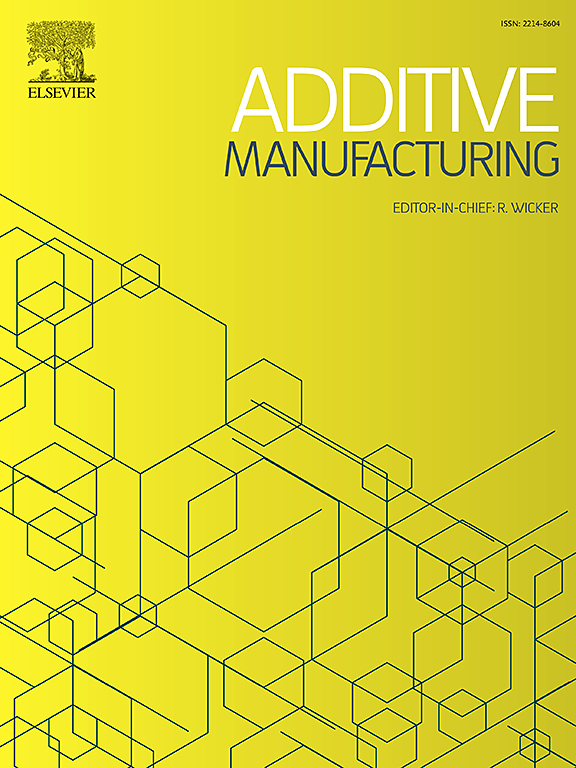A reduced-order modelling procedure for estimating residual stress and distortion in fusion-based metal AM parts
IF 10.3
1区 工程技术
Q1 ENGINEERING, MANUFACTURING
引用次数: 0
Abstract
There has been a growing interest in understanding and estimating residual stress and distortion in fusion-based metal additive manufacturing (AM) to support process qualification and part certification. This paper presents a reduced-order modeling procedure that provides deeper insights into the residual stress development process and improves computational efficiency by identifying two key parameters that have controlling effects on both the final residual stress state and resulting distortion. One is the plastic zone consisting of both the deposition fusion zone and a region around it and the other is the limit elastic strain state within the plastic zone. A set of closed-form solutions is derived for estimating both the plastic zone boundary and the elastic strain limit. With both parameters being determined, a novel shrinkage strain method is presented for performing simplified finite element simulations of some typical metal AM pass depositions and 3D build scenarios. Validations are then performed by comparing the results obtained from the proposed reduced-order modeling procedure and those from detailed time-history-based thermoplasticity simulations and experimental measurements, demonstrating the effectiveness and computational efficiency of the proposed procedure. This approach provides a practical tool for rapid residual stress estimation and a more comprehensive understanding of residual stress evolution in AM processes.
一种用于估计熔合金属增材制造零件残余应力和变形的降阶建模方法
人们对了解和估计基于熔融的金属增材制造(AM)中的残余应力和变形越来越感兴趣,以支持工艺鉴定和零件认证。本文提出了一种降阶建模方法,通过确定对最终残余应力状态和产生的变形具有控制作用的两个关键参数,可以更深入地了解残余应力的发展过程,并提高计算效率。一种是由沉积熔合区及其周围区域组成的塑性区,另一种是塑性区内的极限弹性应变状态。导出了一组用于估计塑性区边界和弹性应变极限的封闭解。在确定了这两个参数的基础上,提出了一种新的收缩应变方法,用于对一些典型金属增材制造孔道沉积和3D构建场景进行简化有限元模拟。然后,通过比较所提出的降阶建模程序和详细的基于时程的热塑性模拟和实验测量结果进行验证,证明了所提出程序的有效性和计算效率。该方法为快速残余应力估计和更全面地了解增材制造过程中的残余应力演变提供了实用工具。
本文章由计算机程序翻译,如有差异,请以英文原文为准。
求助全文
约1分钟内获得全文
求助全文
来源期刊

Additive manufacturing
Materials Science-General Materials Science
CiteScore
19.80
自引率
12.70%
发文量
648
审稿时长
35 days
期刊介绍:
Additive Manufacturing stands as a peer-reviewed journal dedicated to delivering high-quality research papers and reviews in the field of additive manufacturing, serving both academia and industry leaders. The journal's objective is to recognize the innovative essence of additive manufacturing and its diverse applications, providing a comprehensive overview of current developments and future prospects.
The transformative potential of additive manufacturing technologies in product design and manufacturing is poised to disrupt traditional approaches. In response to this paradigm shift, a distinctive and comprehensive publication outlet was essential. Additive Manufacturing fulfills this need, offering a platform for engineers, materials scientists, and practitioners across academia and various industries to document and share innovations in these evolving technologies.
 求助内容:
求助内容: 应助结果提醒方式:
应助结果提醒方式:


